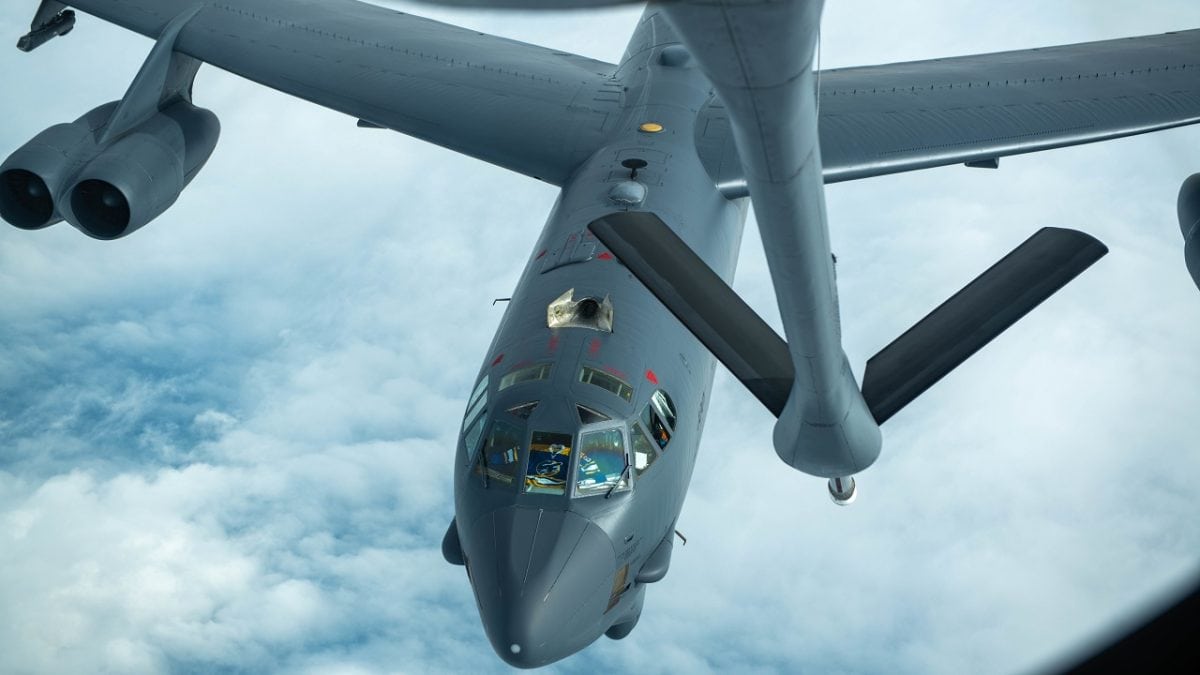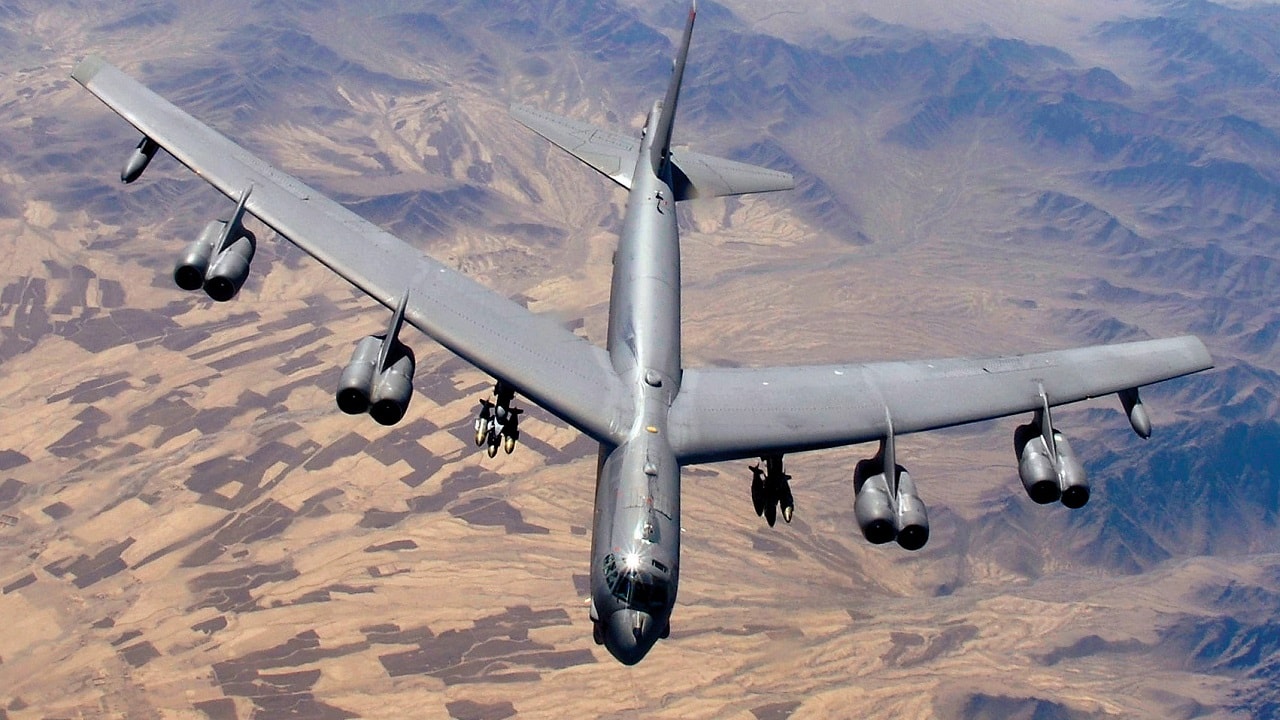A new fuel-efficient, high-tech engine, internal weapons bay increasing attack option, digital communications network able to share real-time intelligence data, and the ability to fire hypersonic missiles and nuclear-capable cruise missiles … are all signature elements of the Air Force’s newly designated B-52 “J” variant.

A U.S. Air Force 5th Bomb Wing B-52 Stratofortress approaches a U.S. Air Force KC-135 Stratotanker, assigned to the 909th Air Refueling Squadron, to perform aerial refueling over the Pacific Ocean, Oct. 27, 2022. Aerial refueling allows friendly aircraft to continue their mission without needing to return to the base for fuel. (U.S. Air Force photo by Airman Alexis Redin).
Updating to “J”
The “J” just might enable the iconic Vietnam-era workhorse bomber to fly for 100 years, as engineers, maintainers, and weapons developers have for many years said that the B-52’s airframes have remained “viable” and indeed highly capable of continued service. In some cases, Air Force and industry experts have reinforced or enhanced the fuselage, yet the fundamental structure of the bomber’s airframe has remained intact. This being said, today’s emerging B-52J is by no means the bomber that emerged decades ago and carpet-bombed enemy territories in Vietnam, rather it is almost an entirely different airplane. One could observe that the “J” variant represents a series of upgrades that have been progressively unfolding over the course of many years.
Upgrades and Variants Began a Decade Ago
As far back as 10 years ago, the Air Force Made rapid strides by integrating a new weapons bay, communications system, and bombing technology. Added to this, the service has worked for many years on re-engineering the B-52 for continued service into the 2050s and even beyond.
The new internal weapons bay effort, the Internal Weapons Bay Upgrade, has been underway for years. The upgrade enables the aircraft to carry more Joint-Air-to-Surface Standoff Missiles (JDAMS) and a weapon called the Miniature Air Launched Decoy jammer variant. Using a digital interface and rotary launcher, the emerging IWBU massively increases the B-52s weapons payload, enabling it to carry up to eight of the newest “J” Series bombs. This precision-bombing technology has been fundamental to the tactical and technological maturation of the B-52, which has evolved from a conventional bomb or so called “carpet bombing” platform into one capable of precision-strikes, hypersonic attacks, long-range cruise missile attacks, and possibly even a drone-launching capability.
B-52 Hypersonics and Radios
The precise weapon may yet be determined, though the B-52 will undoubtedly fire hypersonic weapons. The aircraft did launch the Air-Launched Rapid Response hypersonic weapon in a successful test, however, the service is pausing and potentially cutting or massively scaling back the program. Nonetheless, this does not mean the B-52 will not carry and fire hypersonic weapons but will rather experiment with integrating other hypersonic weapons. In addition to this, the B-52 will also fire the nuclear-capable Long Range Standoff Weapon as part of the air leg of the nuclear triad.
The Air Force has also been integrating a new AESA radar and digital networking system called CONECT, which among other things, enables B-52 crews to receive real-time intelligence data in flight such as updated targeting information. As part of this communications overhaul, the B-52 is integrating new communications and networking technologies, which include a rapid, retargeting low-frequency radio replacement to support nuclear weapons communications.
Perhaps of greatest significance, the datalink radio communications technology enables flight crews to receive intelligence updates and real-time targeting adjustments in flight, removing the need for attack crews to rely purely on pre-mission intelligence data.
Finally, it is entirely conceivable that the B-52 will launch and recover drones and drone swarms in support of AEW and ISR missions. The aircraft, once discussed in the context of the Pentagon’s sought-after “arsenal plane” bomb truck, has on several occasions experimented with launching mini drone swarms to blanket areas with ISR, test, jam, or overwhelm air defenses or even launch offensive EW attacks on enemy communications.
Several years ago, former Air Force Global Strike commander Gen. Tim Ray told the Mitchell Institute for Aerospace Studies that B-52 upgrades “bring an ability to bring in more reliable piston engines and a digital backbone. If I want to be effective in an electronic attack, I need to have that digital side.”
Kris Osborn is the Military Affairs Editor of 19FortyFive and President of Warrior Maven – Center for Military Modernization. Osborn previously served at the Pentagon as a Highly Qualified Expert with the Office of the Assistant Secretary of the Army—Acquisition, Logistics & Technology. Osborn has also worked as an anchor and on-air military specialist at national TV networks. He has appeared as a guest military expert on Fox News, MSNBC, The Military Channel, and The History Channel. He also has a Masters Degree in Comparative Literature from Columbia University.

